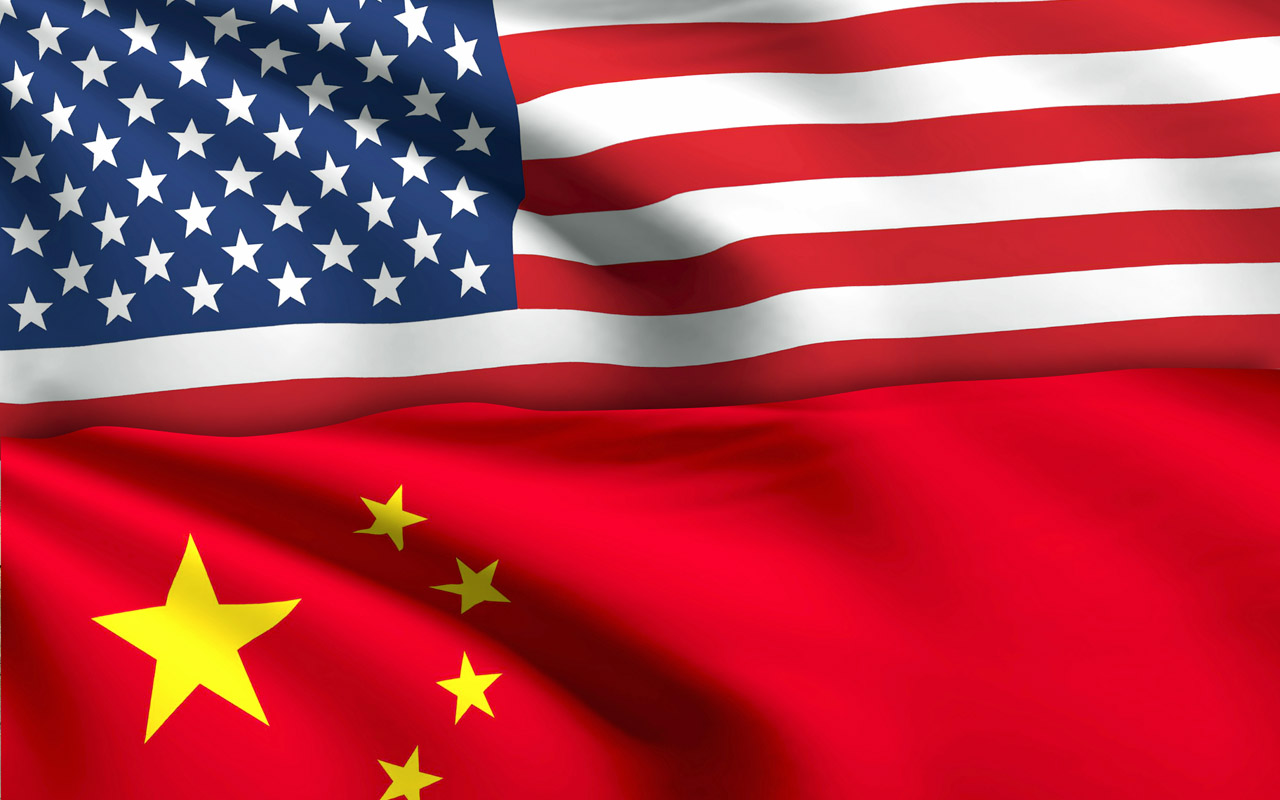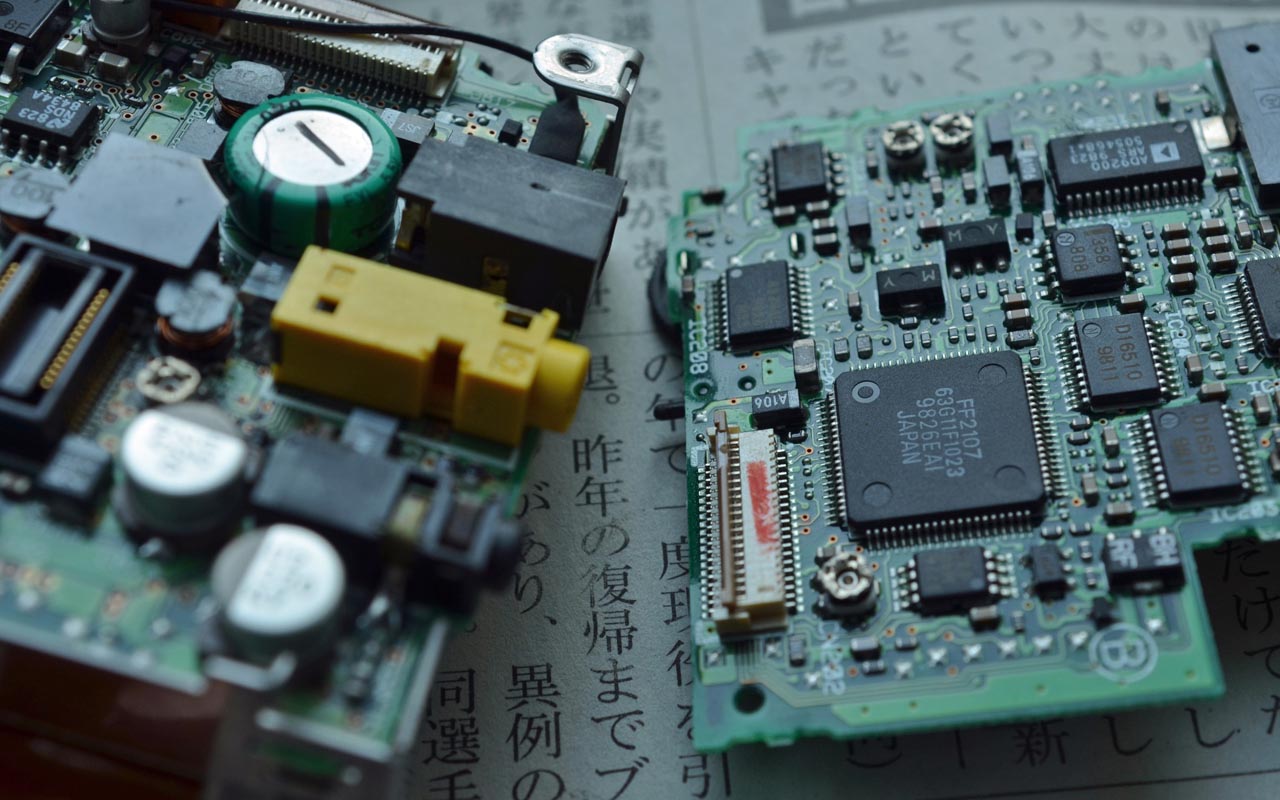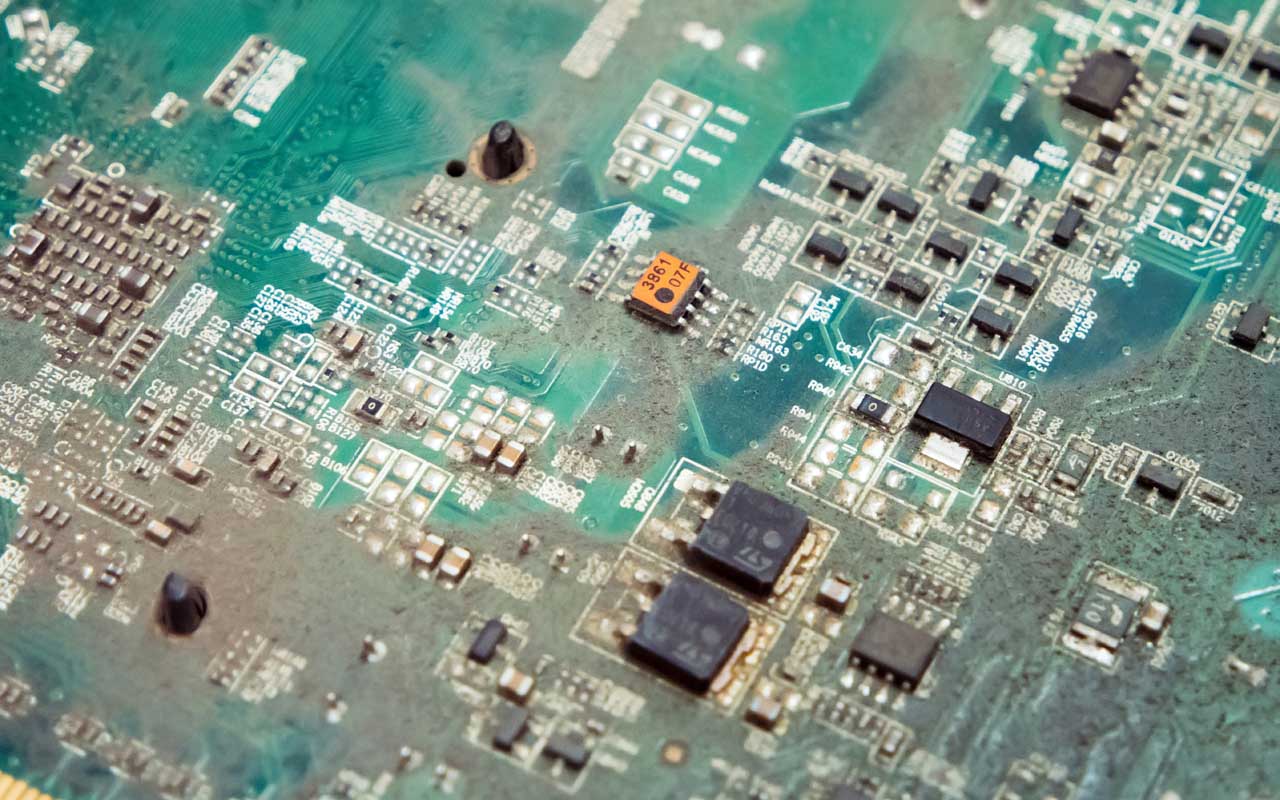10 Stocks That Could Feast or Fall on China Trade


China, the world’s second-largest economy, has been slowing, and that has American investors worried.
True, Chinese gross domestic product clocked a 6.4% annual gain in the final three months of 2018 – a rate most nations would envy. U.S. GDP grew at a 2.6% annual rate in the fourth quarter. Nevertheless, China’s GDP grew at a 10.6% rate in 2010, according to the World Bank, and has been slowing ever since.
The U.S.-China trade war has only increased anxiety about the Chinese economy. The Chinese stock market has tumbled 13.6% the past 12 months, according to MSCI – worse than the average 10.6% loss for emerging markets. American investors worry about China’s growth because it’s such an enormous market, and some of the largest U.S. companies have made big bets on Chinese expansion.
Here are the 10 U.S. companies that derive the greatest percentage of their revenues from China. If you’re optimistic about China’s economic resilience and prospects for a trade deal, they could be bargains now. If you think things can only get worse, you can probably wait for a better purchase point in the future.
Disclaimer
Data is as of March 22. This list excludes companies with market values of less than $5 billion. Data is courtesy of S&P Capital IQ and Morningstar.

Applied Materials
- Market value: $37.8 billion
- Percent of revenue from China: 30.5%
- 12-month total return: -31.0%
If you want to make semiconductors, you’re probably going to need something from Applied Materials (AMAT, $39.86), which sells the equipment for making chips.
China is the world’s largest consumer of semiconductors, accounting for 32% of global semiconductor sales in 2017, according to Credit Suisse. But it relies heavily on imports from abroad – something that’s further hampered by the trade war with the U.S., which is threatening to slow imports of American technology.

Amphenol
- Market value: $28.2 billion
- Percent of revenue from China: 31.6%
- 12-month total return: 8.3%
- Amphenol (APH, $94.54) is all about connectivity – specifically, connecting electronic devices to each other. The company is particularly active in the automotive industry.
That, and the fact that nearly a third of its revenues are derived from China, are problematic considering that the Chinese auto industry has hit a speed bump; auto sales have fallen for nine consecutive months.
Amphenol had a solid year in 2018 thanks to a strongly diversified product line. But Morningstar analyst Seth Sherwood warns that the company is increasingly dependent on growth in China to drive growth.

A.O. Smith
- Market value: $8.7 billion
- Percent of revenue from China: 33.6%
- 12-month total return: -18.5%
Nearly everyone in the world loves hot water, whether it’s for heating apartments, taking showers or washing dishes – and that’s where A.O. Smith (AOS, $51.74) comes in. A.O. Smith is North America’s largest maker of water heaters and boilers, though it also has a water-treatment business that serves China, among other markets.
Despite the slowdown in China, A.O. Smith increased sales there by 2% for all of 2018, but China sales slowed in the fourth quarter. The company also said that for 2019, it expects China sales to fall 7% to 10% in U.S. dollar terms.
Fortunately, the bulk of A.O. Smith’s business is in North America, and the company expects sales there will hold up well.

Maxim Integrated Products
- Market value: $14.8 billion
- Percent of revenue from China: 34.9%
- 12-month total return: -6.9%
- Maxim Integrated Products (MXIM, $54.21) makes analog computer chips, which are widely used for sensors and electrical power supplies, which can be found in everything from fire alarms to wearable devices such as smartwatches.
The company saw its net revenue fall 10% in fiscal second quarter 2019, which ended December, from its previous quarter, and a 7% decrease from fiscal Q2 2018. While its Automotive division posted an 8% year-over-year gain, its business in China was off markedly, according to Bruce E. Kiddoo, Maxim’s chief investment officer.
“We really saw the weakness in the December quarter in China,” Kiddoo said in the company’s second-quarter conference call. “I mean, it was much lower, meaning it was literally kind of down double digits quarter-over-quarter when seasonally it's usually up kind of low double digits quarter-over-quarter. So that's really where we saw that weakness.”

Advanced Micro Devices
- Market value: $28.5 billion
- Percent of revenue from China: 38.9%
- 12-month total return: 141.7%
- Advanced Micro Devices (AMD, $26.37) designs and sells semiconductors, and part of its blistering returns comes from selling semiconductors used in mining cryptocurrencies, such as Bitcoin.
But another reason for the stock’s hot performance this year – it’s up 42.8%, even after its 5.5% drubbing March 22 – is China’s promise during trade talks to buy $30 billion in chips over six years. That promise has been baked into the stock’s price; thus, AMD would be vulnerable if trade talks collapse.

Cypress Semiconductor
- Market value: $5.4 billion
- Percent of revenue from China: 39.2%
- 12-month total return: -12.9%
- Cypress Semiconductor (CY, $14.94) makes computer chips, particularly programmable computer systems on chips, which are widely used in the auto and entertainment industries. Cypress noted in its annual report that products subject to American tariffs – those assembled in China and imported to the U.S. – generated about 1.5% of the company’s annual revenue in the fourth quarter of 2018.
The company says it doesn’t expect tariffs to create any meaningful disruption on its supply chain costs. Nevertheless, revenue from China dropped to $972.9 million in 2018 from $980.7 million in 2017.

IPG Photonics
- Market value: $7.7 billion
- Percent of revenue from China: 43.1%
- 12-month total return: -39.6%
If you’re looking for lasers, IPG Photonics (IPGP, $144.77) is the place to look. The company makes lasers for manufacturing, automotive, industrial, health, aerospace, semiconductor and consumer markets.
China certainly was one reason for its weak 12-month performance; the company reported a 19% year-over-year decline in sales in China in the fourth quarter. The company is projecting softer first-quarter revenues thanks to slowing world economies, currency fluctuations and geopolitical tensions.

Texas Instruments
- Market value: $102.9 billion
- Percent of revenue from China: 44.3%
- 12-month total return: 8.5%
A Kiplinger 15 dividend stock, Texas Instruments (TXN, $109.68) has been diligent about doling out dividends. (The stock currently yields 2.5%).
Sales for the chipmaker haven’t exactly been pumping mud; the company reported sales growth of 5.5% in 2018. Nevertheless, that’s down from 12% in 2018, and the company notes in its 2018 annual report that “shipments of products to China typically represent a large portion of our revenue.”
Texas Instruments may not be as big as Texas, but it does have size on its side: It’s the largest maker of analog chips, and that’s a big help when there are cyclical headwinds.

Qorvo
- Market value: $8.8 billion
- Percent of revenue from China: 55.4%
- 12-month total return: -1.3%
- Qorvo (QRVO, $71.67) makes radio frequency filters and other components of smart phones, as well as cable TV and networking equipment. The company is the product of the merger of RF Micro Devices and TriQuint Semiconductor in 2014.
While Qorvo operates internationally, it’s especially vulnerable to a slowdown in China, as the company notes in its 2018 annual report: “Any weakness in the Chinese economy could result in a decrease in demand for consumer products that contain our products, which could materially and adversely affect our business.”

Monolithic Power Systems
- Market value: $6.0 billion
- Percent of revenue from China: 57.5%
- 12-month total return: 17.5%
Lots of things – such as your computer’s USB port – need to move power from one place to another, often at different power levels. That’s where Monolithic Power Systems (MPWR, $139.67) comes in: It makes power solutions for industrial applications, telecommunication infrastructures, cloud computing, automotive and consumer applications.
Despite its big reliance on China, revenues surged 18.6% in the fourth quarter from 12 months earlier, in part because of the growth of the Internet of Things. The company is especially well-positioned in the automotive sector, including advanced driver assistance systems, which help keep you in your lane and out of the body repair shop.
Get Kiplinger Today newsletter — free
Profit and prosper with the best of Kiplinger's advice on investing, taxes, retirement, personal finance and much more. Delivered daily. Enter your email in the box and click Sign Me Up.

-
 Trump’s Tax Cut Risks Your SNAP, Medicaid Benefits
Trump’s Tax Cut Risks Your SNAP, Medicaid BenefitsTax Cuts The GOP budget blueprint could slash lifesaving programs for millions of U.S. households.
By Gabriella Cruz-Martínez
-
 Can Trump Fire Powell? A Supreme Court Case Could Decide
Can Trump Fire Powell? A Supreme Court Case Could DecidePresidential posts threaten to overwhelm decades of precedent and tradition, whatever the nine justices decide.
By David Dittman
-
 The Cheapest Places To Retire in the US
The Cheapest Places To Retire in the USWhen you're trying to balance a fixed income with an enjoyable retirement, cost of living is a crucial factor to consider.
By Stacy Rapacon
-
 Can Stocks Picked by Artificial Intelligence Beat the Market? 3 Stocks to Watch
Can Stocks Picked by Artificial Intelligence Beat the Market? 3 Stocks to Watchstocks An artificial intelligence stock-picking platform identifying high-potential equities has been sharp in the past. Here are three of its top stocks to watch over the next few months.
By Dan Burrows
-
 5 Stocks to Sell or Avoid Now
5 Stocks to Sell or Avoid Nowstocks to sell In a difficult market like this, weak positions can get even weaker. Wall Street analysts believe these five stocks should be near the front of your sell list.
By Dan Burrows
-
 Best Stocks for Rising Interest Rates
Best Stocks for Rising Interest Ratesstocks The Federal Reserve has been aggressive in its rate hiking, and there's a chance it's not done yet. Here are eight of the best stocks for rising interest rates.
By Jeff Reeves
-
 The 5 Safest Vanguard Funds to Own in a Volatile Market
The 5 Safest Vanguard Funds to Own in a Volatile Marketrecession The safest Vanguard funds can help prepare investors for continued market tumult, but without high fees.
By Kyle Woodley
-
 The 5 Best Inflation-Proof Stocks
The 5 Best Inflation-Proof Stocksstocks Higher prices have been a major headache for investors, but these best inflation-proof stocks could help ease the impact.
By Louis Navellier
-
 5 of the Best Preferred Stock ETFs for High and Stable Dividends
5 of the Best Preferred Stock ETFs for High and Stable DividendsETFs The best preferred stock ETFs allow you to reduce your risk by investing in baskets of preferred stocks.
By Kyle Woodley
-
 What Happens When the Retirement Honeymoon Phase Is Over?
What Happens When the Retirement Honeymoon Phase Is Over?In the early days, all is fun and exciting, but after a while, it may seem to some like they’ve lost as much as they’ve gained. What then?
By T. Eric Reich, CIMA®, CFP®, CLU®, ChFC®
